Second Temple Judaism Studies Collection (7 vols.)
Digital Logos Edition
Overview
The Second Temple Period was an era of profound transformation in the religious and social practices of the Near East. From the experiences of the post-exilic community, to the rise of the Persian, Greek, and Romans empires, the study of Second Temple Period is vital for understanding Judaism, as well as the historical context in which Christianity emerged.
The 7-volume Second Temple Judaism Studies Collection assembles contributions from today’s top scholars in the field. Some studies examine textual issues, such as William M. Schniedewind’s thorough analysis of transition in the prophetic role during the Second Temple period. Other studies are of historical nature, such as Frederick H. Cryer and Thomas L. Thompson’s edited volume on Qumran. This collection also contains Philip R. Davies’ important study on the Damascus Document is an invaluable resource for scholars of the Dead Sea Scrolls. You’ll also find two edited volumes on the period as a whole, featuring more than two dozen contributors. These volumes also contain detailed studies of the Achaemenid Period, the Hellenistic period, and the Hasmonean period.

- Contributions from top scholars in the field, such as Philip R. Davies, Lester Grabbe, David J.A. Clines, Thomas L. Thompson, and others
- Thorough scholarship on the important subfields
- Studies on textual and historical matters
- All Scripture references linked to original language texts and English translations in your library (that you own)
- Title: Second Temple Judaism Studies Collection
- Publisher: T & T Clark International/Sheffield Academic Press
- Volumes: 7
- Pages: 2,135
This title is included in the following collections
You can save when you purchase this product as part of a collection.
Logos 8 Messianic Jewish Diamo...
$2,999.99$2,999.99Logos 9 Messianic Jewish Diamo...
$2,999.99$2,999.992025 Messianic Jewish Portfoli...
$4,749.99$3,562.49Verbum 8 Portfolio Legacy Libr...
$4,749.99$4,749.99
- $4,999.99
- $7,749.99
- $23,999.99$17,999.99
- $21,749.99
- $24,999.99
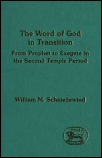
The Chronicler distinguishes between "traditional prophets" and "inspired messengers," and thereby highlights a radical transition in the meaning of the "word of God" which takes place in the post-exilic period. The Chronicler summarizes his perspective in 2 Chron. 36.16, saying that Israel rejected "his prophets", "the messengers of God", and "his word" (i.e. Torah). This distinction is reflected in the forms and functions of prophetic speech in the books of Chronicles. Thus, the prophets speak to the king, and the inspired messengers (e.g. priests, Levites) speak to the people. The prophets interpret narrative events for the king; they explain how God acts. The inspired messengers exhort the people, admonishing them how they should act. The prophets' speeches usually do not use any kind of inspiration formula, but the inspired messengers' speeches are prefaced with possession formulas. These possession formulas are not typical of classical prophecy and mark the rise of a new kind of prophecy, namely, the inspired interpretation of texts. These inspired messengers are thus forerunners of the inspired interpreters of scripture in Qumran, early Christianity and Judaism.
William Schniedewind is Assistant Professor, Biblical Studies and North-West Semitic Languages, Department of Near Eastern Languages and Cultures, University of California, Los Angeles.
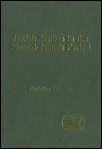
Based on evidence taken from a wide range of source material, Christine Schams employs an innovative approach to the study of Jewish scribes and their role in the Second Temple period. This historical investigation uncovers the status and the functions of the scribes, and explore their role in ancient Jewish society. She begins with a detailed overview of previous scholarship, and discusses the corpus of relevant evidence and existing literature on the subject. She then presents new evidence, and provides a description of a large variety of economic, social, religious, and political factors operating during the Second Temple period which provides possible explanations for the complex evidence about the scribes. This important monograph will benefit the scholars of the Hebrew Bible and Jewish history.
Christine Schams succeeds in drawing together a wide range of relevant texts from a six-century span to construct a variegated portrayal of the status, power, and functions of Jewish scribes during the Second Temple period. She argues that the scribal role has changed over time and in different geographical locales. . . . In four chapters, she reviews prior scholarship on her topic, examines literature pertaining to scribes from the post-exilic Achaemenid Persian to the Roman period, and advances her own view of the evolution of the role and status of scribes. . . . A principle strength of Schams’ work is the comprehensiveness of sources she treats and her careful assessment of each of the sources. The book is well-researched and in dialogue with considerable scholarly literature. By treating all relevant sources from the Second Temple period, she has provided scholars with a very useful catalogue of information.
—Judith H. Newman, Review of Biblical Literature
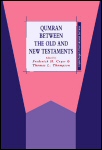
This volume contains papers from the International Scandinavian Conference on the Dead Sea Scrolls and Qumran, sponsored by the University of Copenhagen and held in 1995. In addition to the contributions of Florentino Garc'a Mart'nez, Emanuel Tov and Ben Zion Wacholder, this collection offers a wide range of recent Scandinavian scholarship on the Dead Sea Scrolls. Central issues dealt with include the dating of the scrolls, the theological relationships between the Scrolls and the Old Testament, questions relating to text and tradition formation, and the social relations between Qumran and contemporary Jewish sectarianism.
Frederick H. Cryer was formerly Project Director of the Dead Sea Scrolls Initiative, Institute for Biblical Exegesis, University of Copenhagen.
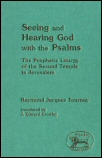
This investigation into the prophetic dimension of the Psalms shows how the postexilic period and especially the world of the Chronicler around 300 BCE provide the main setting for the Psalms, even royal psalms. The Levitical singers of the Second Temple 'made up for the silence of the classical prophets': an idealized David, musician and prophet, is depicted as leader of the cultic prophets and of the entire inspired community. In this way theophanic descriptions and oracular material in the style of the classical prophets were developed and preserved through the Psalms.
Raymond Jacques Tournay was Professor and Director of the Revue Biblique.
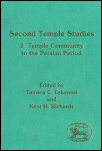
This volume is a rich collection of innovative studies on Judah and Judaism in the postexilic age, by Davies, Garbini, Carroll, Clines, Baltzer, Marinkovic, Van Rooy, Carter, Willi, Japhet, Washington, Smith-Christopher, Judd, Grabbe and the editors. It is an important book in an increasingly important area of biblical research. This is the second volume of papers reflecting the work of Persian Period Group of the Society of Biblical Literature. This will be regarded as an important book in a field of cardinal importance for scholars of the Hebrew Bible.
Tamara Eskenazi is Professor of Hebrew Bible at Hebrew Union College, Jewish Institute of Religion, Los Angeles.
Kent Richards is Professor of Hebrew Bible at Iliff School of Theology, University of Denver, Colorado.

This volume offers a systematic approach to the Persian, Ptolemaic, Seleucid and Hasmonean period, correlating social contexts with the biblical and post-biblical literature that each period generated. The list of contributors includes many of the pioneers of the field of Second Temple sociology, including Kenneth Hoglund, John Wright, Lester Grabbe, Richard Horsley, James Pasto, Robert Doran and the editors. The volume, which also includes an introductory essay on the methods and outcomes of this kind of exercise, furnishes an excellent introduction to the agenda of interpreting biblical texts as social products.
Philip R. Davies is Professor of Biblical Studies in the University of Sheffield, UK.
John Halligan was co-chair of the SBL Sociological of the Second Temple Period Consultation and the Sociology of the Literature of the Second Temple Group. Until his retirement he was Professor of Biblical Studies at St John Fisher College, Rochester, New York.
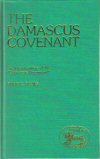
The Damascus Document is one of the most important documents found among the Dead Sea Scrolls. In this important monograph, Philip R. Davies surveys the scholarship from the past century on these textual fragments, beginning with Solomon Schechter’s 1910 Fragments of a Zodokite Work, and covering all significant studies from the twentieth century. The body of Davies’ work offers thorough studies of each section of the Damascus Document, including the history, laws, warnings, and new covenant. Davies also discusses redaction history. The Damascus Document concludes with a lengthy bibliography, as well as a complete text with Davies’ own translation.
Philip R. Davies has degrees from Oxford University and the University of St. Andrews. He is research professor of biblical studies at the University of Sheffield.
Reviews
3 ratings

Eugene Oleson
3/18/2018
Robert Misst
8/20/2014

Phillip J. Long
9/5/2013
The books in this collection are a somewhat odd assortment, but they are all valuable contributions to the study of the Second Temple Period. A serious college, university, or seminary ought to own copies of these books. They may not be the types of books the “average reader” will buy since a dissertation tends to be a challenging read. But anyone working in the Second Temple period ought to consider adding one or all of these books to their library. While some of these these books are available in other electronic libraries, these are formatted to the Logos library so that all of the tools of Logos can be used with them, including robust note-taking, highlighting, and copy and paste functions that simply do not exist in the other formats that have little more functionality than reading a PDF. Logos is simply a superior reading platform to Google or Kindle. For me, the fact that Logos places footnotes at the bottom of the page for downloaded books makes Logos a superior reading tool. On the desktop version of Logos, footnotes are clickable links, but the note floats in a window above the text and can be copied like any other text. I posted a detailed review of the collection on my blog: